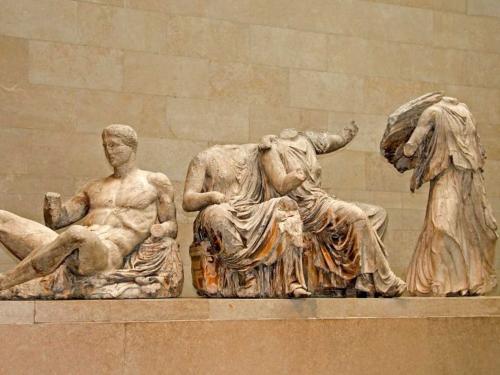Table of Content
The British Museum in Bloomsbury is quite famous all over the world. Dedicated to history, art and culture, it holds many artifacts that can be dated back to ages. But what made this museum even more popular is that, more than half the number of artifacts that belong in this museum are stolen goods from other countries. We are all well aware of the British invasion in various countries from the start of the 16th century. Many of their precious artifacts were stolen during this time which now belongs to the British Museum. While there is a whole lot of debate going on about whether the museum should return these good back to the respective countries, let’s take a look at some of the precious artifacts which are stolen goods.
- Kohinoor Diamond, India
This diamond that was called as the mountain of light and also known as the largest uncut diamond in the world once belonged to the Mughal family. While its origins are unknown, it is believed to be mined from Kollur mine in Andhra Pradesh. The diamond was seized by The East India Company and was presented to Queen Victoria in 1850. Today, it is part of the Royal crown and even though the return of it has been requested many times by not just India but Pakistan and Afghanistan, due to its historic significance, the British government said it was insensible and non-negotiable.
- Elgin Marbles, Greece
The Parthenon Marbles are a collection of ancient Greek marble statues which was part of the temple of the Parthenon and the Acropolis of Athens. This relic was removed from Athens by the British Envoy Lord Elgin when he was the ambassador to the Ottoman empire in the early 19th century. The relic that dates back to 447 BC is a priceless relic and Greece and Britain has been in an argument over the possession of it for years. Even the UNESCO has intervened in the situation by requesting both countries to resolve this long going debate.
- Rosetta Stone, Egypt
The Rosetta Stone is a granodiorite stone from the Ptolemaic dynasty in 196 BC. It had three versions of a decree inscribed on them by King Ptolemy V in the ancient hieroglyphics. It opens the doors to ancient Egyptian history and even says about a possible connection between Egypt and Greece, as greek scripts were also inscribed in the stone. The stone was first acquired by the French in 1799 which later came into the hands of the British when they defeated France in 1801. Even though Egypt has been pushing for the return of the stone, Britain has not budged.
- Benin Bronzes, Nigeria
Benin bronzes are a group of more than 1000 metal plaques and sculptures that was part of the Kingdom of Benin. It was part of Benin art which was done by the Edo people from the 13th century. The artifacts hold much importance as it shows the progression of civilization and culture. However, the British troops stole them after they invaded the kingdom. Today the relics that belong to Nigeria adore the British museum. While the return of it has been requested, British museum says it can only be loaned and expects it to be returned.
- Imperial artifacts, China
These are a large collection of artifacts starting from pottery to paintings, sculptures and art that were collected by the imperial kings of China. These ancient treasures that was once in the Forbidden City in Beijing was stolen by the British in 1860 by ransacking and destroying the Summer Palace. While the return of these artifacts were requested not just by the government but the media and internet users, the British just waved them off by saying that the artifacts are more accessible to visitors in London.
The number of things that the British Museum owns that are not theirs or is a stolen good are plenty. With the British having sole rights on them and even publishing a declaration that stated that the artifacts taken from other cultures belong to them or essentially what is called as the universal museums, it is quite unlikely for the stolen artifacts to be returned. However, with one of the Egyptian artifacts which are a quartzite head of their king Tuticomorin was auctioned off for $6 million dollars against Egyptian will and these put a question mark on the other artifacts that are claimed to be safe at the museum.
.webp)





_1735214375.webp)









